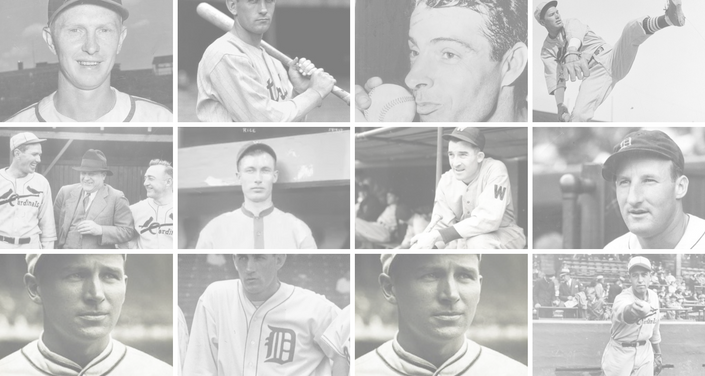Accordingly, 1936 was notable as a period of transition. But before long, the year also would prove notable because it marked the beginning of unprecedented World Series dominance. To the surprise of few, it would be the Yankees who would do the dominating.
Babe Ruth had played the last of his 15 seasons with the Yankees in 1934, two years after the Yanks’ most recent appearance in the Series. Joe DiMaggio had joined the Yankees in 1936, and as a rookie he helped New York to a 19 1/2-game victory margin in the American League pennant race by slamming 29 home runs, driving in 125 runs and batting .323.
The Yankees’ return to the World Series coincided with the New York Giants’ re-emergence as National League champions. And while the Giants did not have the joy ride to the pennant that the Yankees experienced — Bill Terry’s team finished on top by five games — they did have a meal ticket. His name was Carl Hubbell.
At 33, Hubbell put together an amazing season. The lefthanded pitcher won his last 16 decisions, finishing 26-6. His ERA was 2.31.
Hubbell, naturally, was Terry’s nominee to start Game 1 of the Series. Yankees manager Joe McCarthy chose 20-game winner Red Ruffing.
Yanks left fielder Jake Powell, obtained from Washington in a mid-June trade, solved Hubbell for base hits in his first three trips to the plate. George Selkirk, who had replaced Ruth in right field for the American Leaguers, clubbed a third-inning home run off the screwballer. Beyond that, however, little more need be said. Hubbell allowed only seven hits and struck out eight batters. Incredibly, not one of King Carl’s outfielders was called upon to catch a fly ball. The Giants, getting a game-tying homer from shortstop Dick Bartell in the fifth, another run in the sixth and four more in the eighth, won 6-1.
The Yankees won four of the next five games, starting and ending the run with furious assaults on Giants pitchers. In Game 2, the Yanks cuffed Hal Schumacher and four relievers for 17 hits — including a bases-loaded home run by Tony Lazzeri, only the second grand slam in World Series history. All nine Yankees had at least one hit and scored at least one run in the 18-4 laugher; Lazzeri and Bill Dickey each drove in five runs. The next day, McCarthy’s men did it with finesse. Trade acquisition Bump Hadley, with ninth-inning relief from Pat Malone, was a 2-1 winner as shortstop Frankie Crosetti delivered the tie-breaking hit in the eighth.
Hubbell, unaccustomed to defeat, received a taste of same in Game 4. He allowed four Yankee runs — two coming on Lou Gehrig’s second homer in two days — in the first three innings and lost 5-2 to Monte Pearson and the Yanks. Pearson, obtained from Cleveland after the 1935 season, had won 19 games.
On the brink of elimination, the Giants stayed alive with a 5-4, 10-inning victory in Game 5. The winning run scored on a fly ball hit by Giants manager Terry, appearing in what turned out to be the next-to-last game of his major league playing career.
Elimination did come to the Giants the next afternoon. Powell homered and knocked in four runs, and he, Lazzeri, DiMaggio and Red Rolfe each had three hits as the Yankees wrapped up matters with a 13-5 romp. Lefty Gomez, the beneficiary of a 17-hit offensive for the second time in the Series (he went the distance in Game 2), did not coast in Game 6. He left in the seventh inning in favor of Johnny Murphy and held only a 5-4 lead at the time. But Gomez remained the pitcher of record as the Yankees traded runs with the Giants in the eighth and then went on a seven-run onslaught in the ninth.
The Yankees pounded out 65 hits, with Powell and Rolfe — .455 and .400 hitters — collecting 10 each. DiMaggio batted .346. Gehrig was his usual productive self, knocking in seven runs and boosting his RBIs total in Series play to 31 in 25 games.
The Giants had their moments, the biggest of which came in the first game when Hubbell’s wizardry enabled them to halt the Yankees’ Series winning streak at 12 games. But as evidenced in Games 2 and 6, in particular, and in the other games in general, Terry’s men were up against an irresistible force. And this was a force that was just beginning to assert itself in the World Series.



